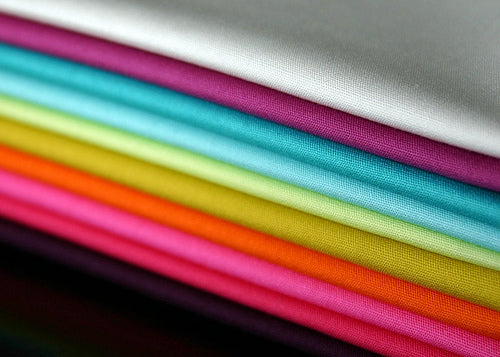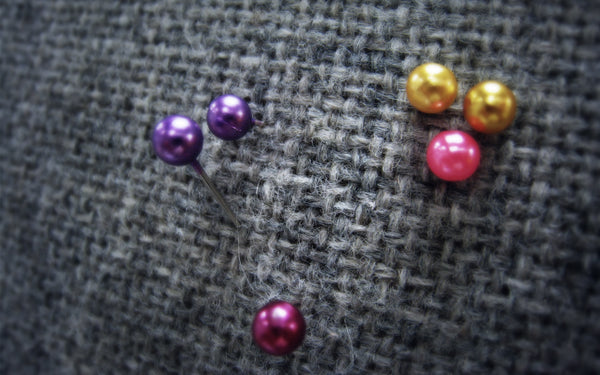Fibers have been collected and used since the early history of mankind. Natural fibers are twisted, braided and woven into mats, clothing, rugs, carpets and a wide range of other items that serve to make our lives more functional, comfortable and aesthetically pleasing. Plant and animal fibers are still used throughout the world along with manufactured fibers that are produced through chemical engineering. It is important to have a basic understanding of fibers and fabrics and how they relate to the durability and longevity of the upholstery and decorative items that we use to decorate our homes.

 Natural Fibers
Natural Fibers
Cotton, wool, flax, hemp and silk are all examples of commonly used Natural Fibers. In the harvesting process of Natural Fibers, the fibers are collected, cleaned and processed to remove dirt, oils, shells and other residue that may be left over from the collection process. The Links Alpaca Pillow, Light Gray by Alicia Adams Alpaca is a beautiful, 100% baby alpaca throw pillow.
 Synthetic Fibers
Synthetic Fibers
Synthetic Fibers are man-made fibers that are formed by pushing a thick, liquid, polymer solution through the smalls holes of a spinnerette. A second process of drying or soaking hardens the fibers as the solvents evaporate. The Panther Cascade Throw by Christopher Guy is a stunning, faux throw blanket that is made entirely of polyester!
Drawing and Stretching
After the solution has been pushed through the spinnerette, the resulting filaments are wrapped and pulled around wheels and pulleys causing the molecules of the filament to align themselves which results in a very durable thread.
 Yarns
Yarns
Yarns are formed from short fibers being twisted or spun together in various sizes and shapes which determine the appearance and quality of the fabric that is formed from them.
Blends
The characteristic and appearance of a yarn can be customized and changed by blending different types of synthetic and natural fibers. This technique can create a yarn that possesses the best qualities of the different fibers.
Weaving
The two methods of weaving are called flat and pile. Flat fabrics are characterized by the simple, over-under intertwining of the vertical and horizontal yarns. Twill and satin are popular flat fabrics. Pile fabrics are created when an extra set of yarn is interlaced with the horizontal yarn so that loops or cut ends are produced on the surface of the fabric. Terry cloth and velvet are common examples of piled fabrics. The pictures below show examples of a flat weave (Right) and a pile weave (Left).


Wicker
Wicker is made of hard, woven fibers that form a rigid material used for furniture or decorative items. Wicker is typically made of plant-based materials but can also be created from plastic fibers. Reed, bamboo, rattan and willow are plants that are commonly used to produce Wicker. Wicker creates light, sturdy furniture that is typically used in outdoor settings. The photo below features a variety of hand-woven, Wicker baskets.
 Cleaning Codes
Cleaning Codes
When selecting a fiber or fabric for your home, you should be aware of the Cleaning Code in order to preserve your product and keep it looking new for years to come. The common Cleaning Codes are:
(S) Solvent Only: This code means that your product should be spot treated with a solvent - putting water on this item may damage the fibers.
(W) Water: This code means that your product should be cleaned with water-based agents.
(S-W) Solvent-Water: The S-W code means that your product can be cleaned with water-based agents as well as pure solvents.
(X) Vacuuming or Light Brushing: Do not apply liquid cleaners to items with this cleaning code.
Fabric Protectors and Treatments
Fabric used throughout the home is often treated with a solution that will protect the fabric and preserve its beauty and integrity. This treatment can be incorporated into the fabric during manufacturing or sprayed on to the finished piece. Scotchguard, Teflon and Zepel are commonly used soil repellents.

Choosing Quality Fabrics
In order select a durable, quality fabric for your home, just remember; the tighter the weave, the more durable the fabric. Durability is determined by the number of picks (horizontal or vertical yarns) per square inch. For example, this tightly woven fabric (Left) has a high pick count.

 Natural Fibers
Natural Fibers Synthetic Fibers
Synthetic Fibers Yarns
Yarns
 Cleaning Codes
Cleaning Codes